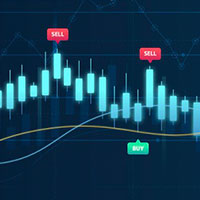Understanding the core of an activity always makes it easier to do it regardless of how complicated it is. That is the case with fundamental analysis. While it may be done through various activities, its essence is quite simple, and we will explore it in this article. Fundamental analysis is based on knowledge. It doesn’t have to be wide, but it has to be spot-on, and practical. Olymp Trade’s Help Center is full of useful information. Also, there are specific sections dedicated to starting trading with fundamental analysis for beginners, and for advanced traders too.
This Type of Analysis Focuses on Fundamentals
Forget about the prices and charts for a moment. Think about what they represent. There are economies, companies, people, things being produced, bought and sold, money being paid, transferred, and traveling around the world in different currencies. All these and many more are real processes. They exist without charts and graphs. Therefore, they are primary, or fundamental. Understanding them is what fundamental analysis does.
More specifically, fundamental analysis looks at a trading instrument as a product of a particular company or economy and suggests you understand how that company or economy is doing. Is it fundamentally well or unwell?
If the company or economy is doing well, then the trading instrument that represents it will also likely perform well and promise great potential. If the company or economy is not doing well, then the trading instrument that represents it will similarly underperform, lag behind the market average, and offer dull perspectives.
Once you answer the question posed by fundamental analysis and come to one of the two conclusions summarized above, you can make a trade decision based on that. Now, the question is how to understand whether an economy or a company is doing well? Let’s have a look.
What is Fundamental Analysis in Currencies?
Every country or economic union has its own currency. The United States has USD, Europe has EUR, the United Kingdom has GBP, Japan has JPY, and so on. Therefore, what you’ll have to do is to analyze the news and analytical reports that describe the current and anticipated state of the economy in question.
Usually, if a country or economic zone is experiencing growth and enjoys positive perspectives without major threats ahead, its currency goes up. If a country or an economic zone is in depression, experiencing or expecting troubles, its currency loses value and goes down. As you trade currency pairs, the price performance of each is a result of how strong one currency is against the other one.
For example, if on a given day, there is depressing news affecting JPY and no major news for USD, then JPY will likely lose value against USD. As a result, USD/JPY will go up. If on another day, there is positive news for the GBP and some bad news for EUR, EUR/GBP will likely go down.
Here is a list of the most impactful news for currency pairs.
- Interest rate changes and Monetary Reports released by the central banking authorities
- Strategic statements made by the heads of states
- Employment dynamics shared by labor authorities
- Inflation and consumer price dynamics
- Quarterly and yearly GDP growth rates
There are others, too. Most impactful news is all presented in Olymp Trade’s Insights with the experts’ forecasts on the price direction.
What is Fundamental Analysis in the Stock Market?
Stock fundamental analysis looks at the business of the company a stock represents. Specifically, it assesses whether this business brings healthy returns and if it offers promising future prospects. In simple terms, stock fundamental analysis finds out whether the current market capitalization of a business matches its true value.
Among many fundamental approaches to assess a stock, comparative analysis and the stock business evaluation approaches help decide if a particular stock is worthy of being included in your portfolio. Let’s look at these two methods.
Comparative Analysis Using Financial Ratios
This type of stock fundamental analysis is usually applied to compare stocks of the same market sector such as the oil and gas, pharma, or transportation industry. Comparative analysis is based on various indicators and ratios. Among these, P/E, P/S, P/B, and D/P are the easiest to use.
The lower the P/E, P/S, P/B ratios, the better the stock is viewed. The higher the D/P, the better the business is viewed by this approach.
P/E is the company price, or its market capitalization, divided by its earnings. Therefore, it is essentially the business’ pay-off term. For example, if we buy a company for $100mln that generates a yearly return of $10mln, it will take 10 years to have our investment paid off. The sooner that moment, the lesser the period, and the better. P/B divides the company market cap, or its current price, by its book value, or its own capital as per the balance sheet. For example, if we buy a $100mln company that owns several factories with the total value of $100mln, the P/B will be $100mln/$100mln=1. In this case, we would know that what we pay to buy this business is its real value. The lower the P/B, the better for the purchaser of the business. P/S is the company price divided by its sales. Most often, growing sales usually mean strong business dynamics for a company. In the meantime, the lower this ratio, the better it is for the purchaser of the stock.
D/P is a ratio that assesses the company dividend profitability. If we buy a business for $100mln, and it pays a yearly $50mln in dividends, its dividend profitability is 50%. That would mean that one year of owning this business would bring a 50% return on our investment and 2 years would pay us back entirely.
Evaluation the Company as a Business
Evaluation of a company a particular stock belongs to relies on a variety of financial indicators such as the total asset value and liabilities, owned capital, revenue, net income, dividend payout policy. Generally, all stocks can be divided into growth stocks and value stocks. Growth stock companies have actively growing revenues, but they may not pay out dividends. Value stock companies’ revenue may not necessarily grow, but these companies steadily pay dividends. It is optimal to choose a company with low total liabilities. Here is a useful formula for that.
Company Assets=Total Liabilities-Own Capital
Dividing total liabilities by the company assets, we will have the ratio we need. Generally, the lower it is, the better. In the meantime, each industry has its threshold values. For example, it is normal for banks to have high total liabilities. In other market sectors, total liabilities amounting to 70-75% of company assets are an alarming indication.
A growth stock company should bring growing sales. Yearly sales growth of more than 15-20% is considered optimal for such stocks. Logically, if sales don’t grow or drop, the stock cannot be recommended for purchase. Now, the growth stock companies don’t see their sales grow as actively as before. Their yearly sales growth value is often within 5-10%, and it is considered a good stock to buy.
Net earnings are also expected to rise with growth stock companies. It is a key indicator because a company may have high sales but because of high salary payouts, expensive resources it uses, or bad investments, it may have low, zero, or even negative net earnings. Therefore, if the company’s net earnings fail to grow, it’s a bad indication.
Dividend payout police is another key indicator. If a company steadily pays high dividends year after year, it may be a good indication. At the same time, it may mean that the company fails to find investment and strategic expansion possibilities. That’s why, while the “dividend companies” pay good dividends, they often fail to grow. Frequently, the price of such company stocks oscillates within a certain range.
Summarizing Stock Fundamental Analysis
Now, we come to the general summary of how stock fundamental analysis works. Generally, if the company’s business is expanding, sales are growing, and no major obstacles are expected, its stock goes up. If a company is experiencing troubles, sales are not growing that well, business perspectives are uncertain, or it's facing legal problems, its stock loses value and goes down.
Here is a list of most impactful news for stocks:
- Quarterly earnings reports released during earnings seasons
- Major changes in the company operations, strategic vision, and other news
- Changes of CEO and other senior executives
- Mergers and acquisitions
- Competition from other companies
Similar to currency pairs, Olymp Trade’s Insights covers the stock news as well, providing you with fundamental analysis and signals to follow. In the same manner, fundamental analysis works in all other market sectors. To understand what’s ahead for a trading instrument, fundamental analysis suggests you think things through and not only use charts.

















